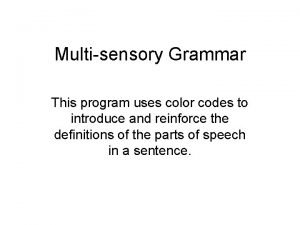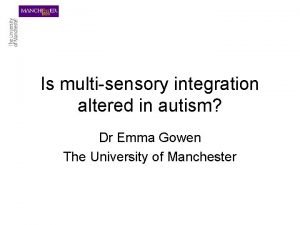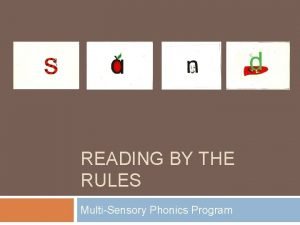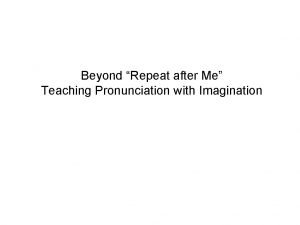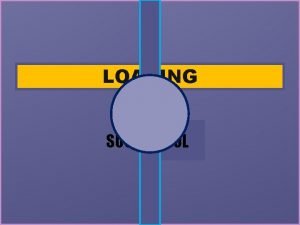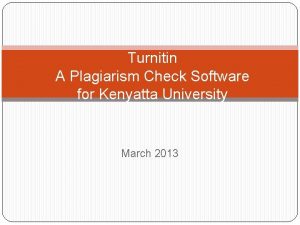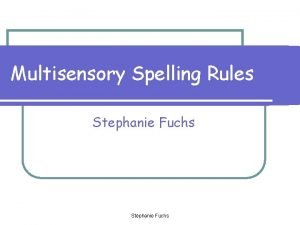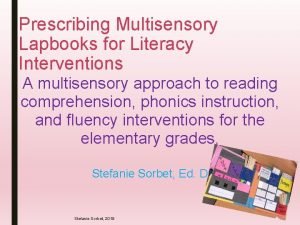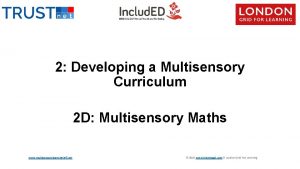Multisensory Grammar This program uses color codes to










- Slides: 10

Multi-sensory Grammar This program uses color codes to introduce and reinforce the definitions of the parts of speech in a sentence.

Nouns • Nouns are color coded yellow. • Road signs that have important information are yellow. Nouns carry important information in a sentence. • Nouns name a person, place, or thing.

Two types of nouns • Proper nouns name a specific noun. • Proper nouns are always capitalized. • The opposite of a proper noun is a common noun. • Both types of nouns are color-coded yellow. Proper nouns Common nouns Sue girl Kleenex tissue Wal-Mart store Coke soda

Verbs • A verb shows action. It shows what a noun is doing. • Verbs are color-coded orange. Just like an orange detour sign shows what to do if a road is out, verbs show what nouns are doing.

Examples of Action Verbs • • Run, sped Jump, leaped, tip-toed Sing, screeched, bellowed Swim, sped, lapped, jetted Sit, slumped, slouched, Talk, speak, yelled, scream, howled CREATE GREAT DESCRIBTIVE VERBS!

Articles • An article show a noun is coming. • Articles are color-coded red. We will think of a red railroad crossing sign. • Just like a railroad crossing sign gives warning of an upcoming train, so articles in a sentence give warning of upcoming nouns.

Articles continued • There are three small articles. • They are a, an and the. • Rule: use an when the following word begins with a vowel. (a, e, i, o, u) • Examples: an apple, an elephant, an ice cream cone, etc.

Subjects and Predicates • Subject – tells who or what the sentence is about • Predicate – tells what the subject does or is. Example: Mary’s mother baked a banana and chocolate birthday cake for John.

Subjects and Predicates • In order to have a complete sentence, you need a subject and a predicate. • We highlight the subject yellow, because it has the most important noun. • We highlight the predicate orange because it has the verb.

Examples of Subjects and predicates • Sue swims. • John sings. • The dog barks. • A boy swims laps. • The children eat at the table. Which part would be highlighted yellow? Which part orange?
